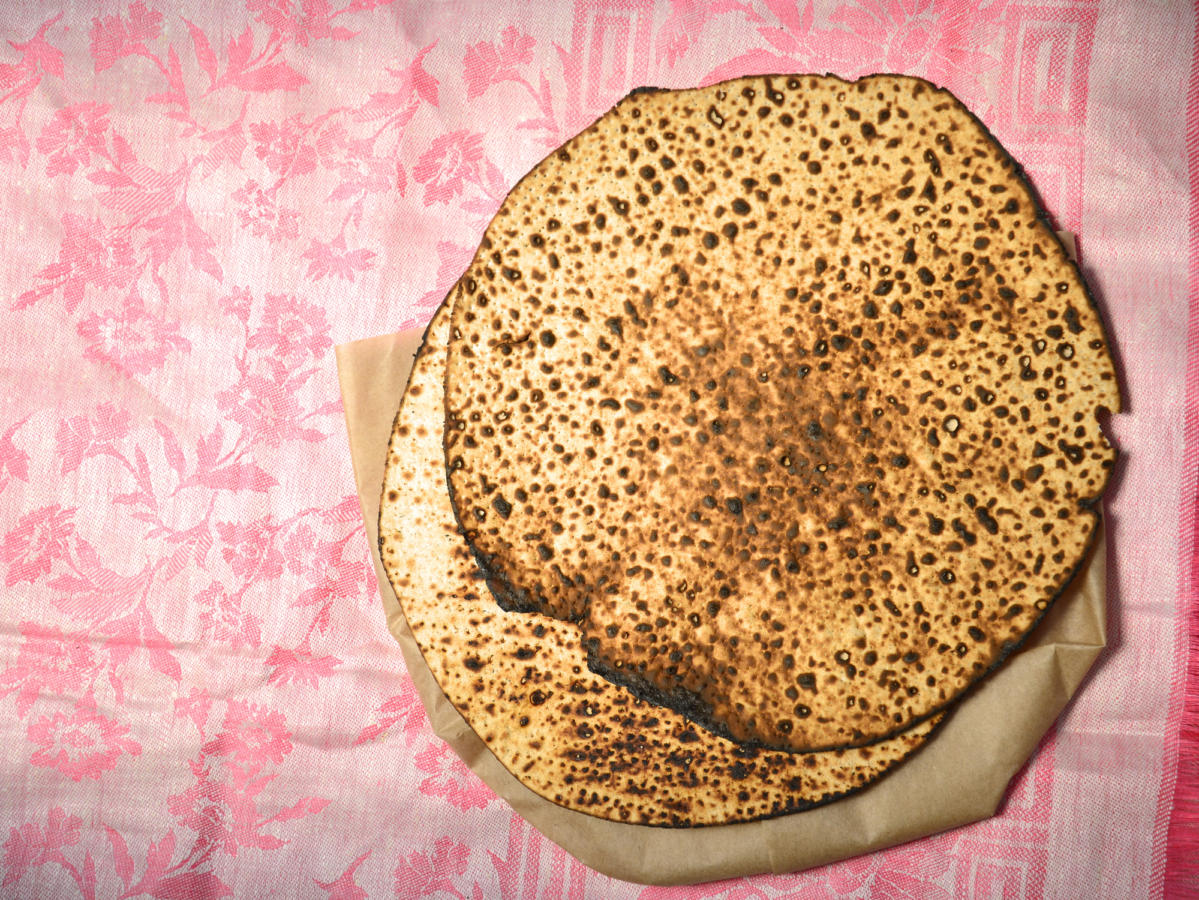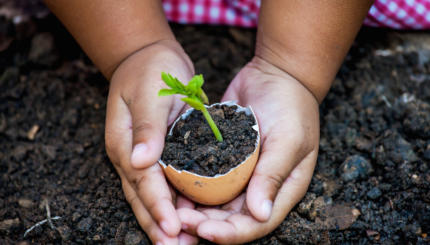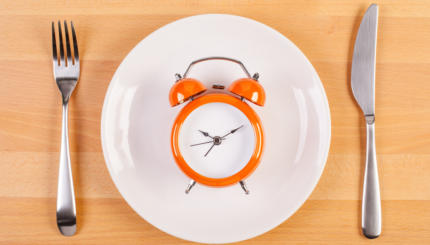Observance of Passover has taken a number of forms through history. This evolution is partly seen in the Torah text itself. It is discussed as a springtime festival, a barley harvest festival, and a time to bring sacrifices to the Temple in Jerusalem. Different references to Passover in the Torah as well as knowledge of other ancient rituals that took place at the same time of year indicate that there may have been several origins of the Pesach festival. The ancient Israelites took what was originally one or more separate Canaanite spring holidays and imbued them with a heightened significance when they made Passover a commemoration of the Exodus from Egypt.
Feast of Unleavened Bread
We now view commemoration of the liberation of the Hebrews from Egyptian bondage as identical to the celebration of the Feast of Unleavened Bread. In Leviticus 23:5-6, however, there seems to be a distinction between the two festivals. The “Lord’s Passover” falls at dusk on the 14th day of the first month, Nisan (referred to in Torah as the month of “Aviv”). The Festival of Unleavened Bread fell on the 15th day of the same month. In Exodus 13:4 and Deuteronomy 16:1, the New Moon is given as the memorial day for the Exodus.
The Paschal Lamb Is Introduced
Setting aside, slaughtering, and eating a paschal lamb was introduced as a celebration of the festival. The Hebrews were commanded to take a lamb for each household on the 10th of the first month (Nisan). The unblemished male lamb in its first year was kept until the 14th day and then killed at eve. This ritual was reminiscent of ancient pagan rituals that took place at this time of the year. Nisan was the month when sheep gave birth and sacrifices were made at the full moon on the 15th of the month.
Spring Harvest Festival
Passover also falls at the time of the beginning of the spring harvest. Leviticus 23:10-16 discusses the omer [a certain measure] of new barley that was brought to the Temple on the second day of the festival. At this time of year, the first sheaf of newly cut barley was offered up as a sacrifice. It has been suggested that the elimination of hametz (leaven), which Jews undertake before Passover, may have originated as a precaution against infecting the new crop. Thus, Hag ha-Matzot (the feast of unleavened bread), which is a name for Passover, may have originally carried this agricultural meaning. Hag ha-Aviv, or Spring Festival, is another name for the festival of Pesach. A number of remnants of the springtime origins of Pesach remain, as in the prayer for dew, and the counting of the Omer that bridges two different spring harvest periods.
Biblical Passover Celebrations
The first Pesach observance, mentioned in Numbers 9:5, took place at Sinai. The first observance in the “holy land” is mentioned in the book of Joshua (5:10-11). The children of Israel kept the Passover in Gilgal on the 14th of Nisan, and ate unleavened bread the next day. It is believed that the turmoil of the Judges period that followed Joshua was not conducive to observance of Pesach. Revival of the holiday probably occurred under Samuel in the 11th century BCE.
Passover as Temple Pilgrimage Festival
With the building of the Temple in Jerusalem, the observance of the festival changed. The Temple was the focal point for the “shalosh regalim,” the Pilgrim Festivals, and it provided a place for carrying out the Pesach sacrifice. Observance of the festival waxed and waned in subsequent periods. Historians believe that after the return from Babylonian exile and the beginning of the second Temple period, at the end of the sixth century BCE, the festival was restored to prominence. The nature of the Pesach observance necessarily had to radically change after the destruction of the Temple in 70 CE, when animal sacrifices ceased.
Development of the Seder
After the destruction of the Temple, Pesach was transformed from a mostly communal, public festival to one centered in the home. A Talmudic tractate devoted to the festival, Pesachim, suggests that home observance of Pesach began prior to the destruction of the Temple. Chanting of Hallel (psalms of praise), which accompanied the slaughtering of the paschal offering began to be practiced during family feasts when the paschal lamb was eaten in private homes throughout Jerusalem. The home seder as we know it today was meant to be a retelling of the Exodus story in response to questions posed by children. These exact wording of the questions changed over time, until they became the four questions beginning “Mah nishtanah” (what is different?) that we know today.
A book called the Haggadah (from the Hebrew root “to tell”) that serves as the liturgy and guidebook for the seder is an amazing pedagogic instrument that developed over time. The first documented evidence of parts of the Haggadah is found in the Mishnah (edited ca. 200 CE). The arrangement of the table, the psalms, benedictions, and other recited matter of today coincide substantially with the program laid down in the Mishnah. Midrashim (commentaries) were added and most of the version we now have was completed by the end of the Talmudic period (500-600 CE). Evidence of the wide acceptance of the Haggadah was its inclusion in Rav Amram’s siddur (prayerbook) in the eighth century CE.
Medieval Additions to the Haggadah
The Haggadah began to be copied as a separate book in the 12th century. Medieval additions to the Haggadah include piyyutim (liturgical poems) and readings in response to the persecution suffered at that time. (Blood libel accusations at Passover time even led to a rabbinic ruling that white wine be used at the seder lest red wine be mistaken for blood.) Pesach has been one of the favorite subjects of Jewish artists through the centuries, and they have created beautiful illuminated Haggadot. There are wonderful examples of these from Prague, Amsterdam, and Venice during the 16th and 17th centuries.
Modern-Day Passover Rituals
The tradition of adding to and adapting things in the Haggadah and the seder has continued. Among them are additions like the Matzah of Hope, which was a reminder of the plight of Soviet Jewry, and Miriam’s Cup, which was added by women who sought to add a female perspective to the festival. By giving the festival contemporary significance, each generation of Jews has performed the mitzvah of telling the story of the Exodus while reliving the event itself.
Haggadah
Pronounced: huh-GAH-duh or hah-gah-DAH, Origin: Hebrew, literally “telling” or “recounting.” A Haggadah is a book that is used to tell the story of the Exodus at the Passover seder. There are many versions available ranging from very traditional to nontraditional, and you can also make your own.
Mishnah
Pronounced: MISH-nuh, Origin: Hebrew, code of Jewish law compiled in the first centuries of the Common Era. Together with the Gemara, it makes up the Talmud.
Nisan
Pronounced: nee-SAHN, Origin: Hebrew, Jewish month, usually coinciding with March-April.
Pesach
Pronounced: PAY-sakh, also PEH-sakh. Origin: Hebrew, the holiday of Passover.
seder
Pronounced: SAY-der, Origin: Hebrew, literally “order”; usually used to describe the ceremonial meal and telling of the Passover story on the first two nights of Passover. (In Israel, Jews have a seder only on the first night of Passover.)
Torah
Pronunced: TORE-uh, Origin: Hebrew, the Five Books of Moses.



